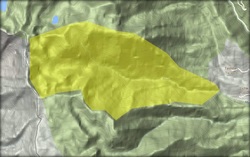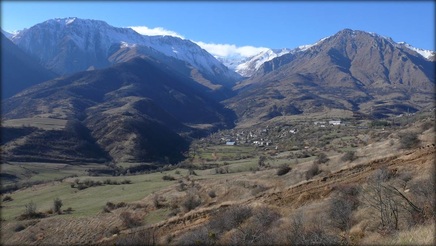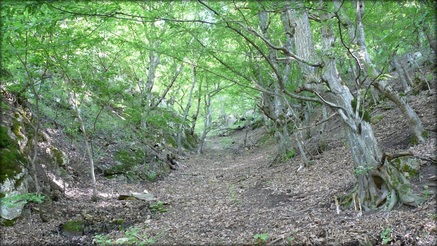|
General description:
The area (about 1979 ha) is located at the eastern slopes of Zangezur mountain ridge at elevations from 1841 to 3757 m above sea level. The average steepness of slopes is from 20˚ to 35˚. The area includes tragacanth mountain steppe, meadows, broad-leafed forest and alpine grasslands. Dominant vegetation among herbs are various grasses (Poa sp. Festuca sp. etc), and legumes (Astragallus sp., Trifolium sp., etc.); among bushes are tragacanths, rosehip (Rosa sp.), hawthorn (Crataegus sp.), honeysuckle (Lonicera sp.), and others; among trees are oak (Quercus sp.) and hornbeam (Carpinus sp.). The area is characterized by relatively humid climate with numerous precipitations; higher elevations have long (eight to nine months) winter. Description of butterfly diversity: Number of butterfly species in the area – 103 (44% of total number of species in Armenia). Two of the species included in IUCN Red List, 7 species included in European Red List, 4 species included in National Red Data Book. The species of national and international concern are: Pyrgus alveus, Pyrgus jupei, Hesperia comma, Parnassius mnemosyne, Parnassius apollo, Pieris bryoniae, Colias thisoa, Colias aurorina, Erebia graucasica, Satyrus effendi, Pseudochazara beroe, Chazara briseis, Boloria caucasica, Lycaena thetis, Pseudophilotes vicrama, Maculinea arion, Eumedonia eumedon, Agriades pyrenaicus, Polyommatus dorylas, Agrodiaetus damon, Agrodiaetus altivagans. Threats: The major threats for the area are related to overgrazing and in a less scale by the habitat change due to construction of the major gas pipeline. One of the major income sources for the two villages located at the area is livestock husbandry. Thus the area serves for grazing and haymaking. The livestock (mainly cattle, goats, and sheep) is grazing here from April till September. Due to intensive grazing there is a danger of removal of host-plants of key species, destruction of productive top-soil at the slopes by feet of livestock, and prevention of regeneration of trees in forest areas due to elimination of young growth. The construction of the gas pipe destroys the habitat on the 50-100 m wide line, which contributes to the habitat fragmentation. The listed threats affect most of the species grow on grasses and bushes. The species of the area which are vulnerable of those threats are Pyrgus alveus, Hesperia comma, Parnassius mnemosyne, Colias aurorina, Chazara briseis, Pseudophilotes vicrama, Maculinea arion, Eumedonia eumedon, Agriades pyrenaicus, Polyommatus dorylas, Agrodiaetus damon. Intensification of grazing at high elevations might have negative impact on Pyrgus jupei, Parnassius apollo, Pieris bryoniae, Colias thisoa, Erebia graucasica, Satyrus effendi, Pseudochazara beroe, Boloria caucasica, Thersamonia thetis, Agrodiaetus altivagans. Among the mentioned species population of Satyrus effendiis of special concern as it occupies around 0.5 ha, and this is a third known population of this endemic species around the world. To secure conservation of the area it is important to strengthen the protection regime and to manage grazing on a sustainable level. Since it potentially can have an influence on livelihood of local inhabitants, it is important to provide alternative pasturelands and support development of ecotourism in the area. During 2014 negotiations with the staff of National Park Arevik (now Zangezur Biosphere Complex) have been conducted on management of the area. the personnel of the National Park was trained in species identification and trail guiding. |
© BirdLinks Armenia NGO, 2014
Charity Registration Number 03A968527
Charity Registration Number 03A968527





